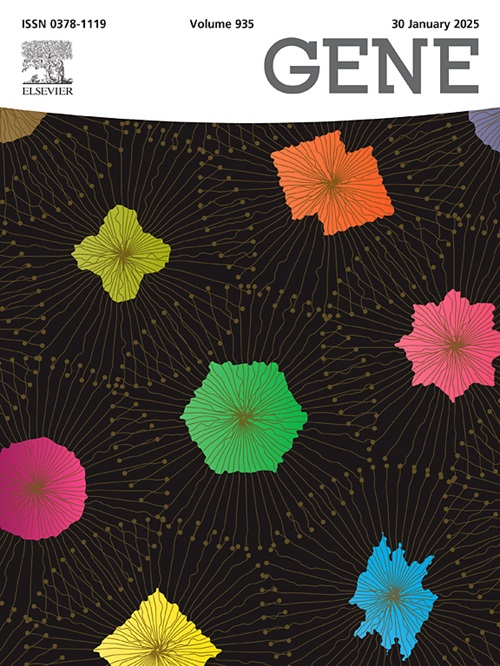新生儿缺氧缺血性脑病大鼠模型中转录组改变、炎症级联反应和氧化应激反应的复杂相互作用
IF 2.4
3区 生物学
Q2 GENETICS & HEREDITY
引用次数: 0
摘要
在这一期基因的“编辑角”中,我们总结了新生儿缺氧缺血性脑病(HIE)发病机制背后不同分子机制的复杂相互作用。这个话题是相关的,因为HIE的治疗选择是有限的,所以尽可能多地了解这种疾病的分子过程是很重要的。在最近一期的《基因》(Gene 952, 2025, 149363)中,Wang等人利用新生儿大鼠HIE模型揭示了在大脑对这类脑损伤的反应中起关键作用的调节过程。他们用改良的Rice-Vannucci模型将大鼠幼仔暴露于缺氧环境中以诱导HIE。通过不同的分子生物学工具和生物信息学分析,他们揭示了在HIE发病机制中发挥重要作用的长链非编码rna、不同的炎症细胞因子、微rna和氧化应激标志物的表达模式。他们在脑组织中发现了1000个不同表达的长链非编码rna,这与这些是各种神经系统疾病中基因表达的关键调节因子的事实是一致的。他们还发现促炎细胞因子(IL-1β、IL-6和TNF-α)上调,抗炎细胞因子IL-10降低。qRT-PCR显示多个mirna表达异常。此外,他们还发现老鼠大脑中超氧化物歧化酶的活性显著降低,丙二醛含量增加。Wang等人提出的发现很重要,因为它们帮助我们更好地理解HIE背后的发病机制。他们的新发现将有望发现新的诊断生物标志物和治疗选择,这将极大地有助于改善新生儿HIE的长期神经预后。本文章由计算机程序翻译,如有差异,请以英文原文为准。
Complex interplay of transcriptomic alterations, inflammatory cascades, and oxidative stress responses in a rat model of neonatal hypoxic-ischemic encephalopathy
In this edition of Gene’s “Editor’s Corner” we summarize the complex interactions of different molecular mechanisms behind the pathogenesis of neonatal hypoxic-ischemic encephalopathy (HIE). The topic is relevant, as the therapeutic options for HIE are limited, it is important to have as much knowledge as possible about the molecular processes underlying the disease. In the recent issue of Gene (Gene 952, 2025, 149363), Wang et al. used the neonatal rat model of HIE to shed light on the regulatory processes that have key roles in the brain’s response to this type of brain injury. They exposed rat pups to hypoxia with a modified Rice-Vannucci model to induce HIE. With different molecular biological tools and bioinformatic analyses they revealed the expression patterns of long non-coding RNAs, different inflammatory cytokines, micro RNAs, and oxidative stress markers which play important roles in the pathogenesis of HIE. They found 1000 differentially expressed long non-coding RNAs in the brain tissue, which is consistent with the fact that these are critical regulators of gene expression in various neurological disorders. They also found the upregulation of pro-inflammatory cytokines (IL-1β, IL-6 and TNF-α) and decrease of the anti-inflammatory cytokine IL-10. qRT-PCR revealed abnormal expression of several miRNAs. In addition, they found a significant decrease in the activity of superoxide dismutase and an increase in malondialdehyde in the rat brains. The presented findings by Wang et. al. are important, because they help us to better understand the pathogenesis behind HIE. Their new findings will hopefully enable the discovery of new diagnostic biomarkers and the therapeutic options, which will greatly contribute to the improvement of long-term neurological outcome of neonatal HIE.
求助全文
通过发布文献求助,成功后即可免费获取论文全文。
去求助
来源期刊

Gene
生物-遗传学
CiteScore
6.10
自引率
2.90%
发文量
718
审稿时长
42 days
期刊介绍:
Gene publishes papers that focus on the regulation, expression, function and evolution of genes in all biological contexts, including all prokaryotic and eukaryotic organisms, as well as viruses.
 求助内容:
求助内容: 应助结果提醒方式:
应助结果提醒方式:


